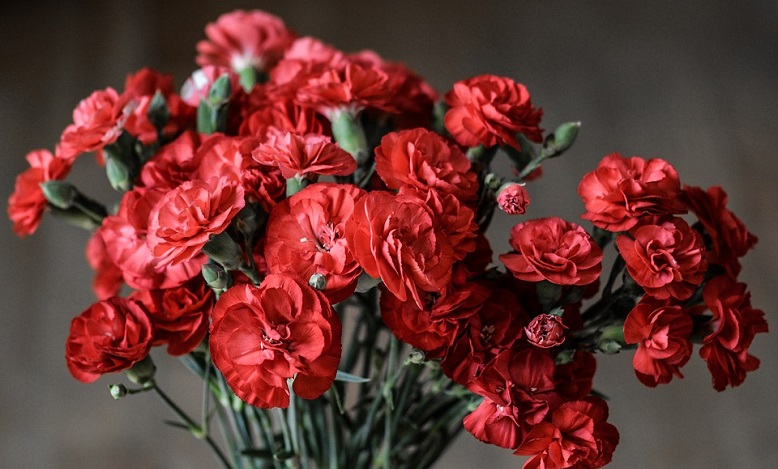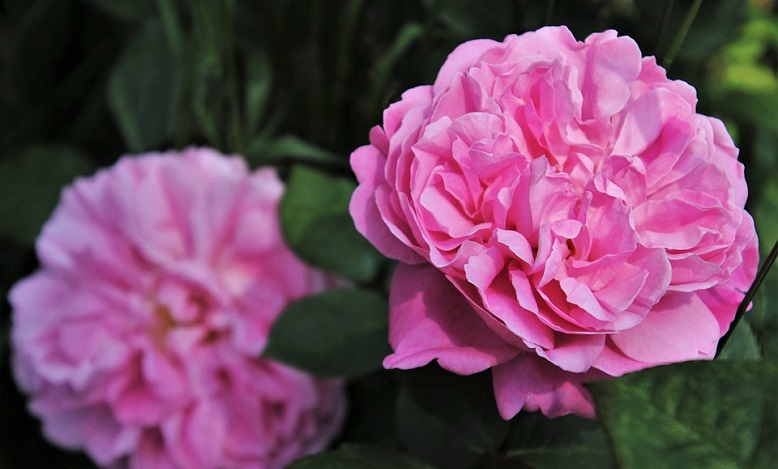The precious essential oils for aromatherapy no longer have to be laboriously dissolved out of the respective plant. These steps are taken over by professional distillations.
Therefore, aromatherapy uses only small vials containing essence or joss sticks. In most cases, scents are inhaled during use, harmonizing the room or enhancing the well-being of the soul.
Depending on the source material, the aromas are suitable for fragrance lamps, massage oils, bath oils or shower oils. Some people extend aromatherapy to everyday life and add drops of it to their natural perfume or personal care products.
However, a little caution is required. The aroma oils are plant essences in high concentrations.
In isolated cases, they can cause allergic reactions, physical irritation and intolerance to overdose. The user should therefore be well informed about the individual effect.
In today’s text, we will be talking about the amazing power of plants and their scents. We will explain their origin and how they can be helpful for you.
As the saying goes: “Let flowers speak!” And there are more than enough ways to give it away.
But next to the red rose, which is a well-known symbol of true love, very few people know that almost all flowers have a meaning. This symbolism is often due to their appearance and their effect but also the color is crucial.
We tell you which flowers are best given away and what they mean. In addition, you learn with us which symbolism behind which color stands.
Rose Symbolism
The rose stands for a kindled passion & love – and this is known worldwide. In any case, if it is awarded in red. Rosa, on the other hand, stands for youth and beauty – as well as giving a hint of tender feelings.
The white rose represents innocence and loyalty. And that is one reason why she is to be found at many weddings in the bridal bouquet. The Gerbera
Gerbera in Orange
The Gerbera grows where it is sunny and beautiful. And this is also reflected in their meaning: “Everything will be more beautiful!”
And in contrast to the red rose, the gerbera may also be given to the helpful neighbor, brother or dear grandmother. The carnation
Red carnation

The carnation was underestimated as a flower for many years, perhaps because it was once the symbol of the working-class movement.
Today, she is happy to be given away and often. In red it stands for strong passion, in white for eternal loyalty, in yellow, on the other hand, it also symbolizes a certain antipathy to the other person.
Sunflower
The sunflower gives the impression of being smiling all day long. And that shows in their meaning, she is pure happiness, fun and human warmth. And that is precisely why it can be given to every kind and warm person, e.g. as honestly meant greeting: “I like you!” The iris
Violet Iris
Like the sunflower, the iris was in the favor of painter Vincent van Gogh. He immortalized her in many of his paintings. The iris is a symbol of creativity and irrepressible energy.
But more than that, the iris can also announce good news! The tulip
Pink tulip
One of the favorite flowers of the Germans is the tulip. It also stands for love and affection, the darker the stronger the feeling.
If you want to make love to your sweetheart, you can do it with a huge bouquet of red tulips. Yellow stands for sunshine, pink for tender love and orange for fascination. The lily
White lily meaning
Just the white lily should be passed on with much heart. It stands for light and therefore for real love! It is a symbol of purity, innocence and virginity.
Orchid in Pink
Ouch orchids are given away with us very much. It is available in many different variants. The cut orchid expresses admiration to the other person: “You are fantastically beautiful”.
Their variety of species and their strong will to survive also symbolize a kind of cleverness.
Freesia in Orange
Fresh Freesia (not “freesia”) seduce with a sweet scent that beguiles. Their fresh colors and the many (panicle) buds are above all for tenderness. Who gives it away, makes a romantic compliment to the other person: “I just love you!” The forget-me-not
Forget-me-not blue flowers
One of the most famous flowers is forget-me-not – also in terms of meaning. Couples in love give away these little blue flowers to symbolize their love and loyalty.
But the forget-me-not can also be forgiven within the family. The daffodil / daffodil
Yellow narcissus
The Easter season is the time for daffodils (also daffodils). Their meaning is not perfectly understood. When daffodils bloom in the spring, and when they are thousands of them in the meadows, they symbolize freshness, liveliness and fertility.
At the same time, the narcissus stands for vanity and selfishness, which they owe their name to. Violet
Violet Symbolism
Descent and restrained shows the violet, which of course is due to their delicate appearance. It stands for modesty, innocence and also secrecy.
By the way: Violets are available in many colors, the blue ones, for example. Symbolize the request for patience. The ranunculus
Ranunculus Orange
Ranunculus make it clear: “You’re great”, “You’re unique”. No wonder, the flowery flowers impress and stand for attractiveness and a magical attraction.
Meaning of flowers in history
Throughout history, the symbolic dimension of the flower has had ancient roots and, over time, has touched the emotional, cultural, mythological, folkloric, poetic, historical, spiritual and religious sphere. In ancient times, some civilizations believed, for example, to be able to appease the gods by decorating the tombs of the dead with floral elements.
The ancient Greeks decorated the altars of the gods with roses and were among the first to celebrate weddings with flowers.
They were also used to crowning influential people, including athletes, with hand-woven wreaths of leaves and flowers in honor of the exceptional successes they had reported.
The Persian Selam, the attribution of codified meanings used to reveal moods, attractions and intimate feelings, was actually a memorization system to remember the names of the associated flowers in rhyme as in poetic verses.
The personification of flowers is found in classical literature: the Roman poet Ovid (43 BC – about 18 AD), in the third book of the epic poem entitled ‘Le Metamorphose’ (8 AD), tells the story of the young Narcissus.
The sixteen year old, extraordinarily beautiful, in love with his image reflected in a spring, let himself die tormented by torment.
Later, where he had disappeared, they found a narcissus flower in birth.
Today, this beautiful flower with a particular shape, with light-colored outer petals and a yellow inner crown, symbolizes personal vanity and self-satisfaction.
The flower has also often been depicted in Christian iconography. However, the symbolism of the lily, which indicates purity, chastity, as well as representing the death and resurrection of Christ during Easter, as well as being one of the symbols associated with the Archangel Gabriel and several other saints.
Beyond this, it is the white color of the flower itself that represents innocence, beyond whether it is a carnation, a white rose, a daisy, or other.
The red rose, instead, also because of its tonality, represents the blood of a martyr, but also the earthly love.
This last meaning has remained as a recurrent and shared practically all over the world: the long-stemmed variety in solitary solution is given to the beloved, but the bundle of a dozen testifies to an even more passionate feeling.
A famous case of symbolic flower adoption occurred in England: the Thirty Years War (1455-1485) erupted for dynastic reasons between the House of Lancaster and that of York was later called ‘War of the Roses’ in reference to the coats of arms of the two families representing respectively the image of a red rose and a white one.
After the victory, Henry VII Tudor merged the two emblems as a sign of peace.
In the nineteenth century, for historical and cultural reasons, the English were forced to become skilled connoisseurs and to systematically follow the symbolic language of flowers to express thoughts and emotions, so much so that the first manuals were also written and published to teach how to choose the most suitable flower on any particular occasion.
The rigid behavioral protocol imposed during the Victorian period did not allow, in fact, any kind of affective and sentimental manifestation explicit in public between men and women. Strategic secret messages entrusted to bouquets of flowers chosen with meticulous care, gathered in a lace doily and tied with a ribbon, to be given away and returned.
Beyond the choices of color and variety, even floral etiquette was very complex, as John Ingram explained, in the treatise ‘Symbolica Flora’ (1869). The symbolic meaning of flowers also includes the particular meaning attributed to the mode of delivery and presentation.
A presented flower placed in a vertical position transmits the positive thought of the donor, the inverted one has a meaning of negation. The same ambivalence concerns the expression inherent in delivering with the right hand, which implies an affirmative answer, while the opposite is the left.

